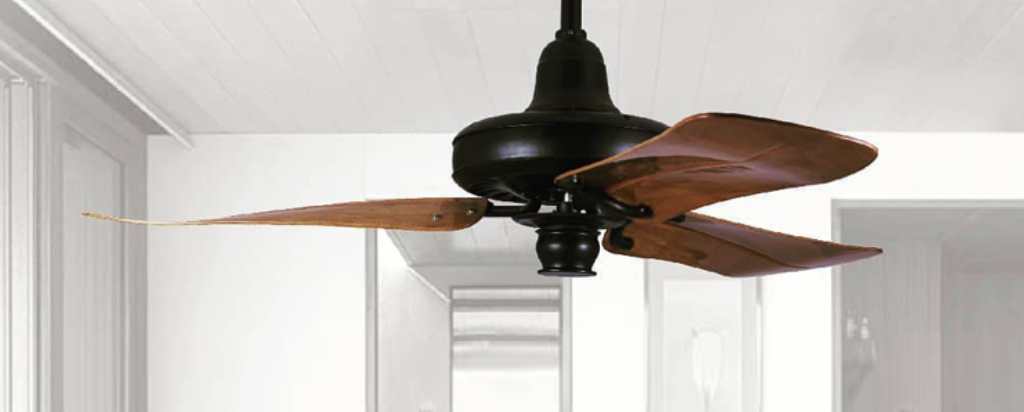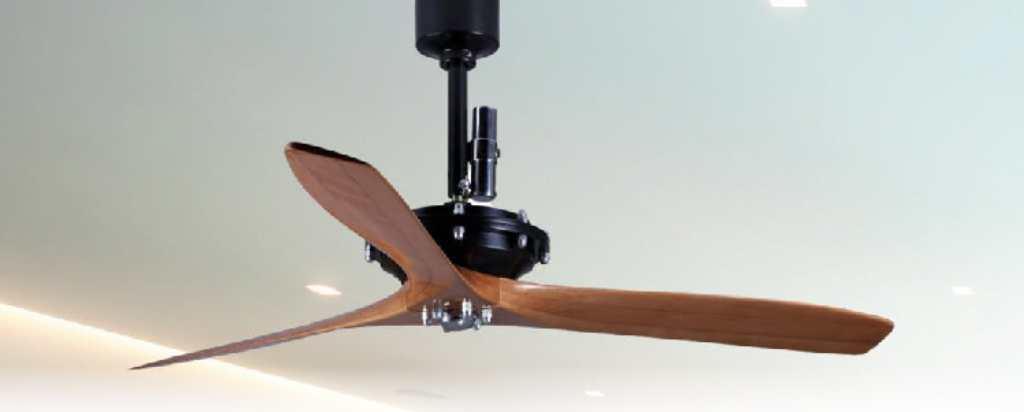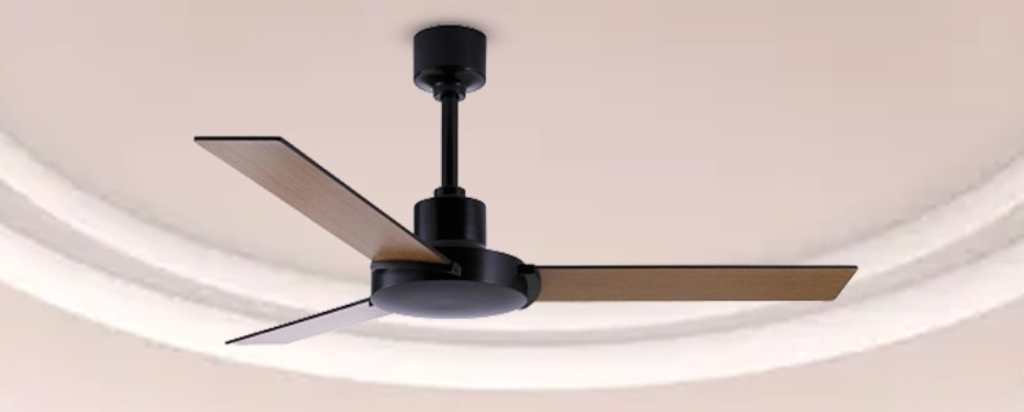Maintaining cool and fresh surroundings is critical for a comfortable summer lifestyle. To beat the oppressive heat, you must have a reliable helper. It’s no wonder that ceiling fans have become the top cooling option for many homeowners. The best qualities of these machines are their outstanding energy economy, low maintenance requirements, and ease of use. They do, however, provide much more. A well-chosen ceiling fan can also improve the design and visual appeal of your home. While ceiling fans may appear to be simple gadgets, there are some design factors to consider while choosing the appropriate one. One example is the distinction between DC and AC fans.
The current consumed by DC and AC fans distinguishes them. Ceiling fan motors use either direct current (DC) or alternating current (AC) . AC fans are driven by an electrical charge with a reverse flow direction, whereas DC fans run with a continuous flow.
This article will compare the other major differences between the two, with an emphasis on environmental friendliness.
AC and DC Fan: Which is More Eco-Friendly?
DC fans are widely regarded as preferable to AC fans in terms of environmental friendliness because they consume significantly less electricity than AC fans. DC-powered fans require up to 50-70% less energy to achieve the same result as standard AC fans, making them an extremely environmentally friendly option.
A DC-powered fan of, for instance, 25 watts has the same effect as an AC-powered fan of 100 watts. This energy efficiency is ideal for both home and commercial settings, such as restaurants, allowing you to run the fans all day without incurring large electric bills.
Can Solar Power Be Used to Power DC or AC Fans?
Solar energy is a renewable form of energy that has the least environmental impact of any energy source. It produces no greenhouse gases and pollutes the environment.
Solar energy uses 20 times less water to maintain than nuclear power facilities. When comparing AC and DC fans, one typical question is whether they can be powered by solar panels.
The good news is that you can use solar energy to power both AC and DC fans. However, if you want to power an AC fan directly from a solar panel, you’ll need a solar converter. This is because solar panels produce DC electricity, which is incompatible with AC-powered appliances.
Furthermore, the inverter would convert the DC waves to AC waves, allowing you to connect the fan directly to a solar panel. If you don’t utilise a solar inverter with an AC fan, the fan’s motor will quickly burn out and cause a fire.
However, if you use a DC fan, you can connect it straight to a solar panel without the need for a solar inverter.
What Other Advantages Do DC-Powered Fans Have Over AC-Powered Fans?
Direct current technology has improved greatly in recent years and is now employed in both industrial and household ceiling fans. Furthermore, DC fans have motors that use permanent magnets to attract and repel a rotor placed around the axis via electronic switching.
Here are some of the benefits of using DC-powered fans:
Lesser Voltage
Because most DC fans are low-voltage, they utilise less voltage than AC fans. DC-powered fans, for example, are commonly available in 24V, 12V, and even 5V variants. Larger variants of these fans, ranging from 119mm to 172mm, are easily available in 48V.
In contrast, the vast majority of AC cooling fan types are now available at 115V, a substantially higher voltage. DC fans are less harmful than AC enthusiasts because of this.
Quieter Operation
DC fans employ a new type of electronically-commutated motor (sin 180). These motors aren’t simply efficient; they’re also reserved. Because DC fans are extremely silent, they are a good choice for applications such as telecom switches, medical instruments, and so on, where noise can be an issue.
Low Electromagnetic Interference
The electromagnetic interference of DC-powered fans is limited due to the low power consumed and the use of sophisticated motor switching.
As a result, sensitive electronic devices typically employ DC fans to reduce or eliminate electromagnetic interference.
For example, computer equipment and applications employ DC fans to prevent overheating while also decreasing electromagnetic interference that could harm sensitive applications.
Dust-Proof and Water-Resistant
DC fans can be installed in places with extreme and harsh environmental conditions. It is strongly recommended that you use a high-quality, trustworthy, water-resistant, and dust-proof model to ensure the safety and health of your family or employees.
For almost two and a half decades, several businesses, including Pelonis Technologies, have been developing industry-leading DC-powered fans.
Inventories include a wide variety of water and weather-resistant fans that provide unrivalled water and dust protection while meeting NASA and military material criteria, UL certifications, and USP certifications.
Their fans also have an environmentally safe coating with spectacular qualities that allows them to endure corrosion, water exposure, dampness, dust, and total water immersion. These characteristics make DC fans ideal for delicate industrial applications.
Changeable Flow
DC fans can provide a variety of speed control functions at a low cost. In this manner, the fan can meet the airflow requirements of a certain application. The fan can be controlled using current, voltage, PWM signals, resistance, and temperature.
By adjusting the fan’s speed as needed, you may extend its life and minimise airflow noise to a minimal minimum.
What Are the Disadvantages of Using DC Fans?
Nonetheless, despite all of its advantages, DC fans have some disadvantages.
- You may require an AC-to-DC converter.
- Cost increases.
- Control Options are Limited.
What Are the Advantages of Using AC Fans Instead of DC Fans?
Here are several advantages of utilising AC fans rather than DC fans.
- More inexpensive.
- Control options have been expanded.
- There are more models to choose from.
What Are the Drawbacks of Using AC Fans?
AC enthusiasts, like DC fans, have their own set of drawbacks.
- Inadequate control over spinning speed.
- Electromagnetic interference has increased.
Which Fan Is Suitable for You?
When deciding between an AC and DC fan, there are several aspects to consider. Remember that certain high-quality ceiling fans are available with both DC and AC motors that are energy efficient while maintaining strong airflow speeds. Here are some things to consider before making a decision.
- Where You Live
Concrete or low ceilings are common in some apartments. Fortunately, low-profile DC fans are available, and they can be readily installed in an existing light supply. Furthermore, there is no need to invest in pricey wall control wiring.
- Investment or Rental Property
As previously said, an AC fan is a less expensive solution. They have a traditional appearance and come with wall control. You also save time and money by not having to deal with damaged or misplaced remote controls.
Several AC fans include a globe holder, allowing you to replace the light without calling an electrician. Furthermore, certain DC fans are now featuring removable LED panels.
Wrapping Up
When it comes to environmental concerns, DC fans come out on top. If you are looking for an eco-friendly DC fan, make sure to check out The Fan Studio website today!





